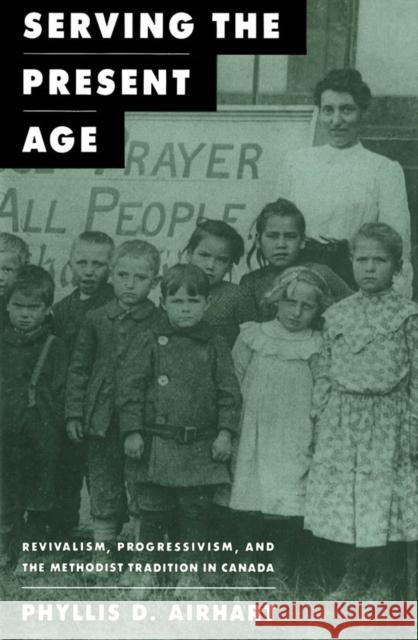Serving the Present Age: Revivalism, Progressivism, and the Methodist Tradition in Canada: Volume 8 » książka
Serving the Present Age: Revivalism, Progressivism, and the Methodist Tradition in Canada: Volume 8
ISBN-13: 9780773508828 / Angielski / Twarda / 1992 / 232 str.
Serving the Present Age: Revivalism, Progressivism, and the Methodist Tradition in Canada: Volume 8
ISBN-13: 9780773508828 / Angielski / Twarda / 1992 / 232 str.
(netto: 515,67 VAT: 5%)
Najniższa cena z 30 dni: 535,29 zł
ok. 22 dni roboczych.
Darmowa dostawa!
Essential to Methodist revivalism was the personal conversion experience, which constituted the basis of salvation and church membership. Revivalism, maintains Airhart, was a distinctive form of piety and socialization that was critical in helping Methodists define who they were, colouring their understanding of how religion was to be experienced, practised, articulated, and cultivated. This revivalist piety, even more than doctrine or policy, was the identifying mark of Methodism in the nineteenth century. But, during the late Victorian era, the Methodist presentation of the religious life underwent a transformation. By 1925, when the Methodist Church was incorporated into the United Church of Canada, its most prominent leaders were espousing an approach to piety that was essentially, and sometimes explicitly, non-revivalist. The Methodist approach to personal religion changed during this transition and, significantly, Methodists increasingly became identified with social Christianity -- although experience remained a key aspect of their theology. There was also a growing tendency to associate revivalism with fundamentalism, a new religious development that used the Methodist language of conversion but was unappealing to Canadian Methodists. Airhart portrays the tensions between tradition and innovation through stories of the men and women who struggled to revitalize religion in an age when conventional social assumptions and institutions were being challenged by the ideals of the progressive movement. Serving the Present Age is an account of Canadian Methodist participation in a realignment of North American Protestantism which supporters believed would better enable them, in the words of a well-known Wesley hymn, "to serve the present age."











